- Home
- slideshows
- miscellaneous
- We asked insurance workers where they'd live in the US to avoid future natural disasters - here's what they said
We asked insurance workers where they'd live in the US to avoid future natural disasters - here's what they said
Minneapolis, Minnesota

Portland, Maine
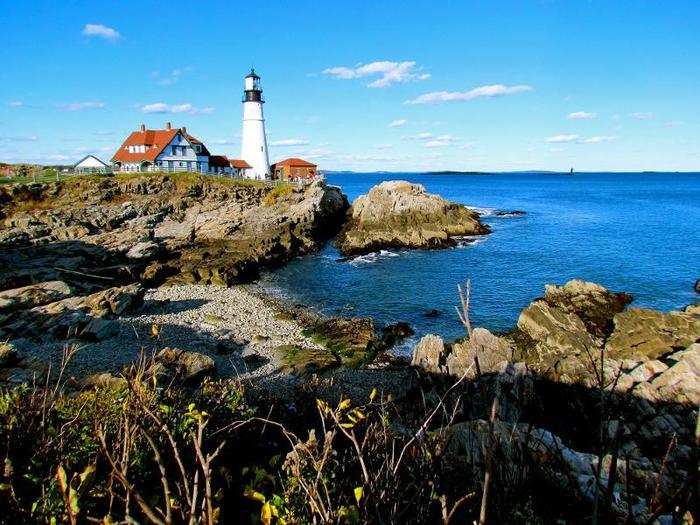
"Climate risks are relatively low here," Collins said of Maine, the state where he currently lives. When asked which city in Maine is the least vulnerable, he points to Portland, the one with the largest population. While Portland may eventually be vulnerable to sea level rise, Collins said these changes are likely to affect those closest to the water as opposed to the many homes on the western side.
His choice is echoed in the research of Kristy Dahl and Astrid Caldas, two senior climatologists at the Union of Concerned Scientists (UCS). After studying the number of homes exposed to frequent high-tide flooding, the scientists found that coastal Maine had less property risk compared to most coastal states.
Salt Lake City, Utah
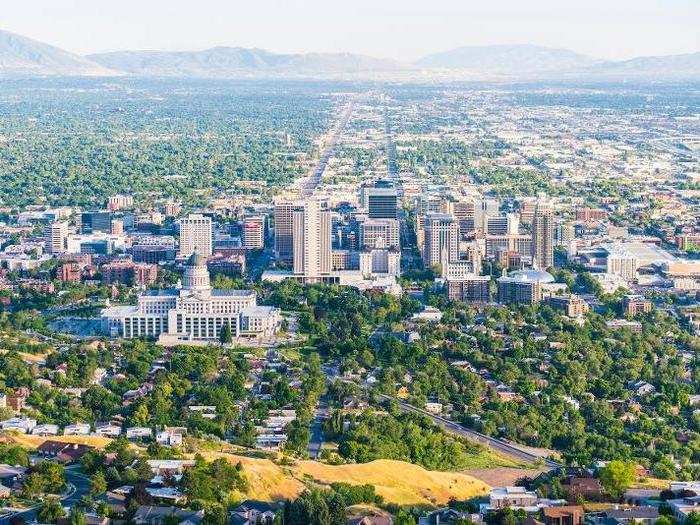
Those looking to avoid the more devastating effects of climate change should consider a home near a lake in a mountainous region, said Chandu Patel, a fellow at the Casualty Actuarial Society (CAS). Lakes provide access to water in the advent of a drought, and a high elevation makes residents less vulnerable to sea level rise.
One community that meets these qualifications is Salt Lake City — a place considered by Collins to be relatively low-risk. In September, the city took an active step toward resiliency by hosting a global climate action summit. It's also one of four local governments in Utah to pledge to achieve 100% renewable energy and reduce greenhouse gas emissions.
Chicago, Illinois

Great Lakes states are often seen as less risky when it comes to climate change, said Rick Gorvett, a staff actuary at CAS — one of the four groups involved in the Actuary Climate Index.
Like Minneapolis, Chicago's northern location protects it from sea level rise and helps mitigate issues of extreme heat. Its proximity to Lake Michigan may also be useful in times of drought. In 2016, the city was dubbed "the place to be" when it came to avoiding climate-related disasters.
Madison, Wisconsin
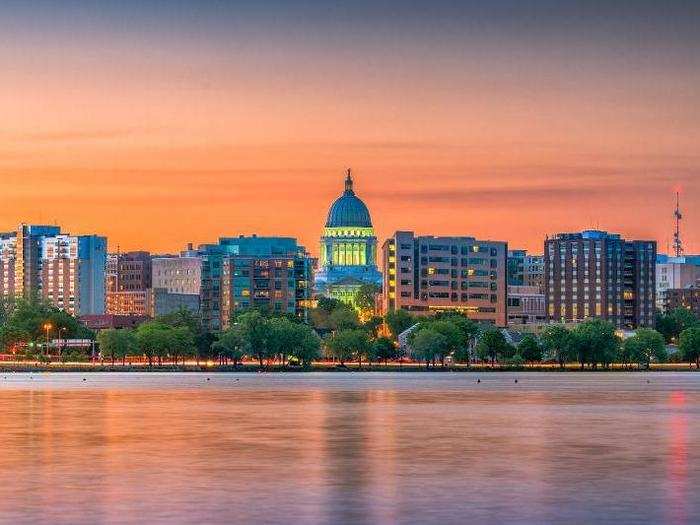
Wisconsin may be known for its cold temperatures, but it's expected to get warmer in the coming years, according to research from the University of Wisconsin-Madison. By mid-century, scientists predict that the city's annual average temperature will increase by 4 to 9 degrees Fahrenheit, while the number of days with sub-zero temperatures will decrease by two to three weeks.
According to Gorvett, however, the main concern for Midwestern states isn't temperature — it's drought. On this scale, the city of Madison is considered relatively low-risk. Along with other nearby cities, it has witnessed fewer extreme weather conditions over the last fifty-plus years.
San Diego, California
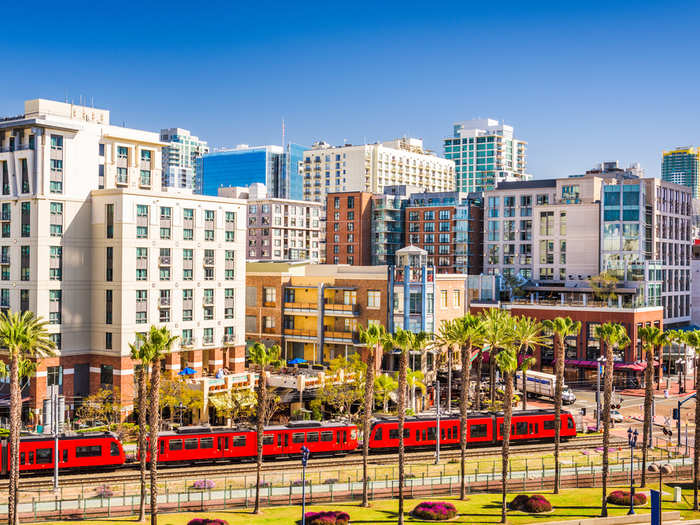
Temperature is one of the most important factors to consider when evaluating climate risk, said Dale Hall, the managing research director at the Society of Actuaries, which also contributed to Climate Index.
On this scale, few places compare to San Diego, which has perhaps the most pristine weather conditions of any US city. By the end of the century, researchers predict that San Diego will gain three days of mild weather per year.
Santa Barbara, California

Santa Barbara may seem like a strange place to avoid risk, given its history of wildfires, but few cities can compete with its amiable temperatures, said Hall.
When it comes to analyzing a disaster, he said, "anything that's hard to predict has more risk associated with it." In Santa Barbara's case, temperatures are fairly consistent year-round.
Denver, Colorado
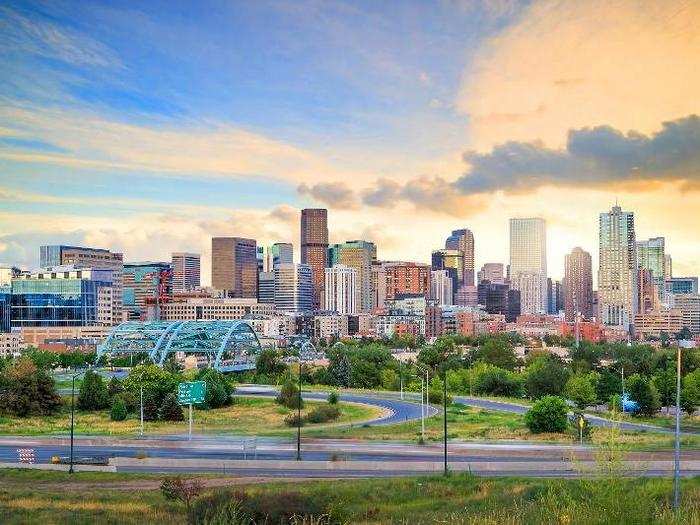
All disasters considered, Denver is perhaps the least risky financial choice. In addition to its high elevation, the city is situated far from the coast, making it less vulnerable to sea level rise. According to Hall, it also demonstrates fewer fluctuations in temperature and is not prone to extreme winds.
These conditions also apply to the nearby city of Boulder, which is included among the preferred locations for climate scientists.
While both cities will have to contend with drought, they've each come up with a plan to monitor water usage and prevent future shortages.
Phoenix, Arizona
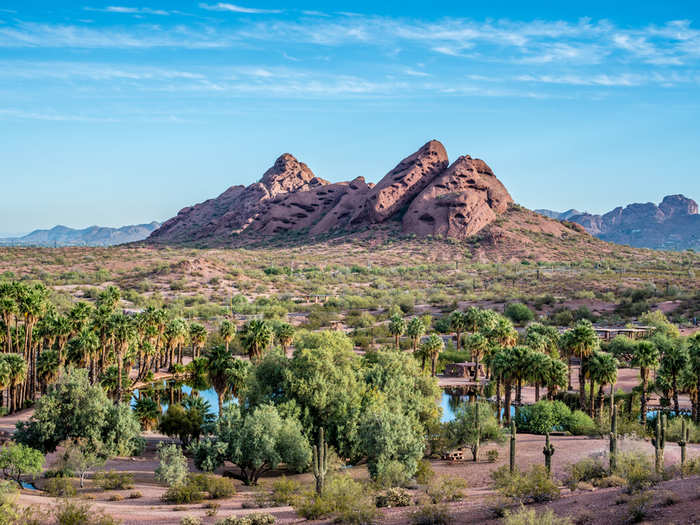
Though its weather may be stifling at times, Phoenix's inland location and mountainous terrain are major advantages when it comes to fending off sea level rise. Like Denver, the city also exhibits fairly consistent temperatures and less extreme winds.
But there's one major caveat: The city's main water sources are drying up, creating conditions for extreme drought. Sociologist Andrew Ross has even dubbed Phoenix "the least sustainable city in the world."
This points to the complicated nature of predicting financial risk — particularly when it comes to climate change. While the Climate Index uses temperature as a starting point, followed by four other indicators, there are a myriad of factors that influence a city's susceptibility to disaster.
In the end, Collins said, "the economic impacts of climate change will affect everyone."
Popular Right Now
Popular Keywords
Advertisement